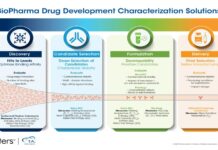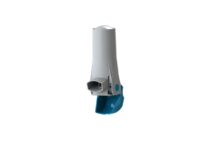Drug development in the European pharmaceutical industry is undergoing a dramatic shift, largely due to the repurposing and reformulation of pre-existing chemicals rather than the discovery of novel molecules. Advances in specialty intermediates, which are essential for repurposing older molecules to satisfy new therapeutic requirements and regulatory constraints, have been the driving force behind this movement. The reformulation boom is altering how pharmaceuticals are manufactured as the sector attempts to address growing healthcare costs, enhance patient outcomes, and adhere to stringent EU regulations.
The Value of Drug Reformulation
Drug reformulation is modifying existing molecules to improve their pharmacokinetic features, therapeutic efficacy, safety profile, or manufacturing process. This strategy is particularly appealing to pharmaceutical firms since it minimises the time, financial commitment, and risks linked to the discovery and development of completely new medications. Reformulated medications frequently meet the criteria for new patents, thereby prolonging their market presence and enhancing profitability.
In the European context, the need for reformulation is driven by a number of factors, including the requirement to comply with stricter EU regulations, the demand for personalised medication, and the push for sustainability in pharmaceutical manufacture. In this progression, specialty intermediates have become essential instruments for bringing old compounds up to date with modern standards and medicinal objectives.
Specialty Intermediates: Catalysts for Innovation
Specialty intermediates are refined chemical compounds utilised in the synthesis of active pharmaceutical ingredients (APIs). These intermediates have distinct functional features that are required for the synthesis of complex compounds, making them vital to medicinal reformulation efforts. Utilising cutting-edge synthetic methods and precise chemical processes, specialty intermediates enable manufacturers to redesign drug molecules, enhancing their solubility, stability, and bioavailability.
The application of functionalised specialty intermediates has played a crucial role in improving controlled-release drug formulations. The use of these intermediates facilitates the alteration of drug release profiles, thereby ensuring prolonged therapeutic effects and minimising side effects for patients. In a similar vein, intermediates exhibiting advanced chiral properties have played a crucial role in the creation of enantiomerically pure APIs, enhancing both the efficacy and safety of reformulated drugs.
A prime example is the reintroduction of established anti-inflammatory medications through the use of specialty intermediates to enhance their gastrointestinal tolerability. Through the integration of targeted-release mechanisms in these formulations, producers have effectively minimised adverse effects and broadened their applications to a wider range of patient populations.
Economic and Regulatory Drivers of Reformulation
The economic benefits driving Europe’s drug reformulation boom are among the most persuasive factors at play. Revising existing molecules presents a financially savvy option compared to discovering new drugs, enabling quicker market access and shorter clinical development periods. A reformulated drug frequently utilises existing clinical data, thereby reducing the cost and complexity associated with regulatory approval processes.
Furthermore, the EU’s rigorous regulatory framework has subjected established medications to heightened examination. Regulations like REACH (Registration, Evaluation, Authorisation, and Restriction of Chemicals) and the standards set by the European Pharmacopoeia require that pharmaceutical components meet stringent safety, environmental, and quality benchmarks. Revamping older molecules through the use of specialty intermediates guarantees adherence to regulations while breathing new life into drugs that could otherwise be at risk of market removal due to non-compliance.
The EU’s commitment to sustainability highlights the critical need for reformulation. Innovative chemistry driven by specialised intermediates fosters more sustainable manufacturing practices by minimising waste, lowering energy use, and decreasing dependence on hazardous substances. The alignment with sustainable practices serves as a significant motivation for pharmaceutical companies to pursue drug reformulation investments.
Technological Innovations Driving Reformulation
The incorporation of innovative technologies has greatly enhanced the use of specialty intermediates in drug reformulation. High-throughput screening methods enable researchers to efficiently assess the compatibility of intermediates with different APIs. Computational chemistry tools facilitate the design and optimisation of intermediates tailored for specific reformulation goals, including improved solubility or precise drug delivery.
In the field, nanotechnology has shown itself to be a revolutionary force. Nano-intermediates have proven to be highly effective in improving the solubility and bioavailability of medications that are poorly soluble in water due to their incredibly small particle size and large surface area. By using these nano-intermediates, oncology medications and other therapeutic agents are now being reformulated, highlighting how crucial accuracy and effectiveness are.
Furthermore, progress in analytical instrumentation, including nuclear magnetic resonance (NMR) spectroscopy and mass spectrometry, has enhanced the characterisation and quality control of specialty intermediates. These tools guarantee that intermediates adhere to rigorous purity and performance standards, effectively reducing risks throughout the reformulation process.
Success Narratives: Established Medications, Fresh Possibilities
The surge in reformulation has produced a wealth of success stories, showcasing the remarkable impact of specialty intermediates. Cholesterol-lowering drugs known as statins have undergone reformulation with advanced intermediates, enhancing their therapeutic index while reducing side effects. These initiatives have rejuvenated statins amidst the rivalry posed by generic alternatives, solidifying their standing in the market.
In a similar vein, proton pump inhibitors (PPIs), commonly utilised for gastric acid-related issues, have seen improvements through reformulation initiatives. Through the use of cutting-edge intermediates, pharmaceutical companies have crafted advanced-release formulations that offer prolonged relief and better patient compliance.
The advancement of combination therapies utilising specialty intermediates has enhanced the effectiveness of traditional antibiotics in combating drug-resistant bacterial strains. The reformulated antibiotics tackle a vital challenge in contemporary healthcare, as antimicrobial resistance increasingly threatens global health.
Challenges in Drug Reformulation
While there are clear benefits, drug reformulation presents its own set of challenges. The elevated expenses associated with specialty intermediates, along with the necessity for thorough research and testing, can put significant pressure on the financial resources of small and medium-sized enterprises (SMEs). Additionally, considerations surrounding intellectual property may add complexity to the reformulation of older drugs, especially in cases where patents for the original molecules have lapsed.
Regulatory challenges continue to exist, as reformulated medications are required to show substantial therapeutic advantages compared to their original versions in order to gain approval. This requires strong clinical and preclinical data, increasing the time and resource commitment needed for reformulation efforts.
The Future of Drug Reformulation in Europe
The increasing dependence on specialised intermediates for drug reformulation signifies a wider movement towards innovation and efficiency within the pharmaceutical sector. With regulatory pressures mounting and a growing focus on sustainability, the significance of specialty intermediates is set to rise even further.
As we move forward, the incorporation of artificial intelligence and machine learning is set to enhance the efficiency of the reformulation process. Models powered by AI have the capability to forecast the behaviour of intermediates in intricate formulations, facilitating quicker and more economical drug redesign. Furthermore, partnerships between pharmaceutical firms and chemical producers are expected to expedite the creation of specialised intermediates, designed to meet particular reformulation requirements.
The surge in drug reformulation across Europe showcases the creativity and resilience of the pharmaceutical industry. Through the strategic use of specialty intermediates, the industry is revitalising traditional molecules while establishing new standards for innovation, sustainability, and patient care.




















